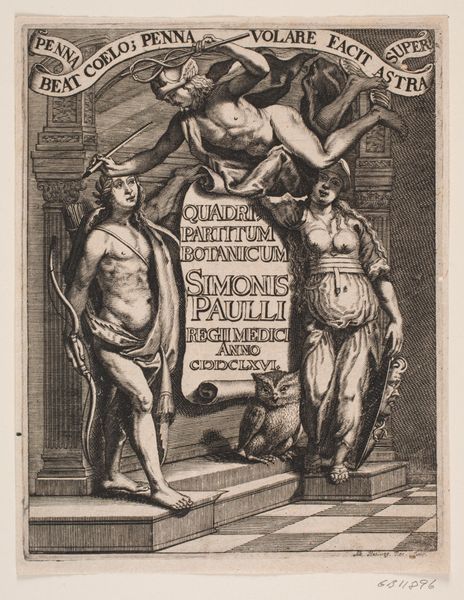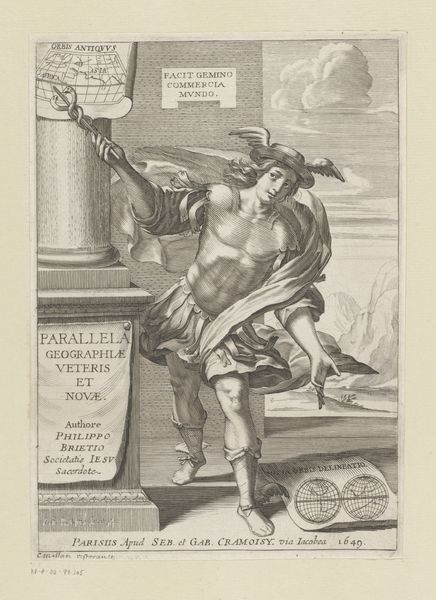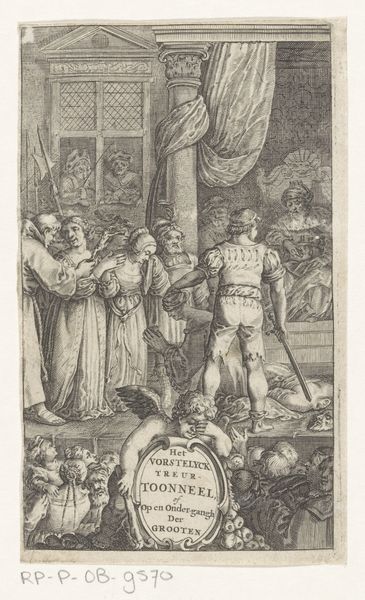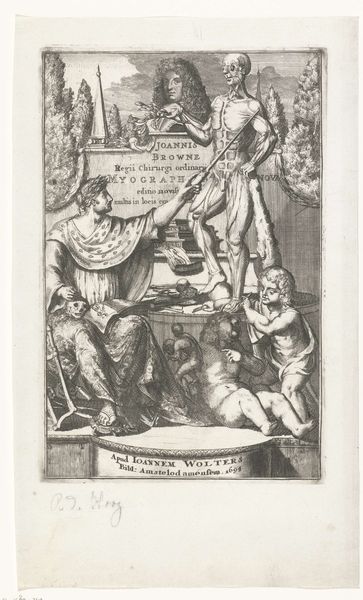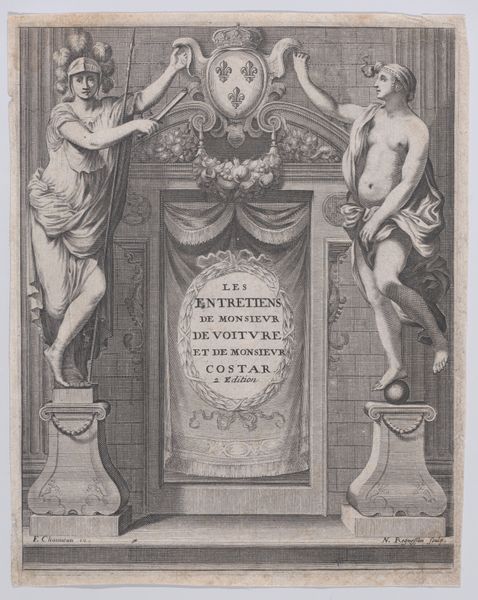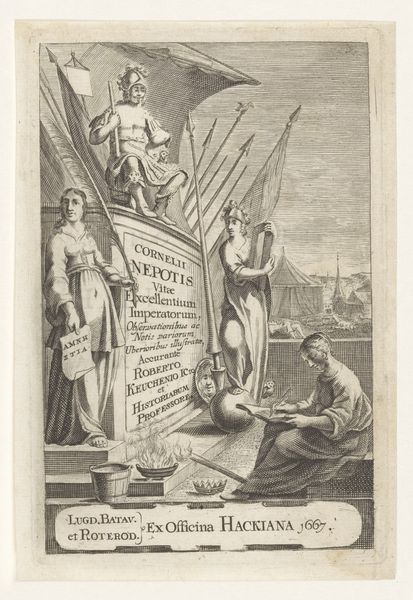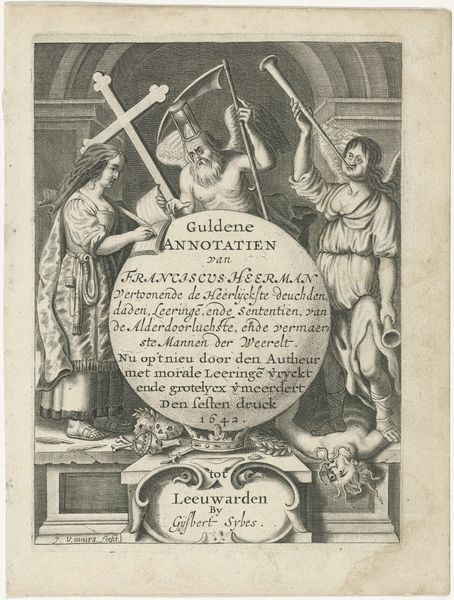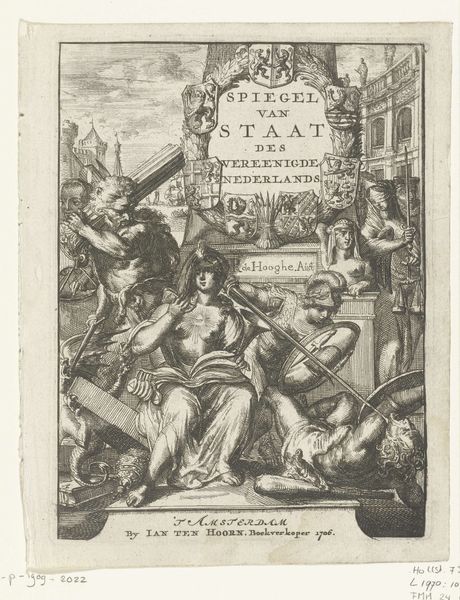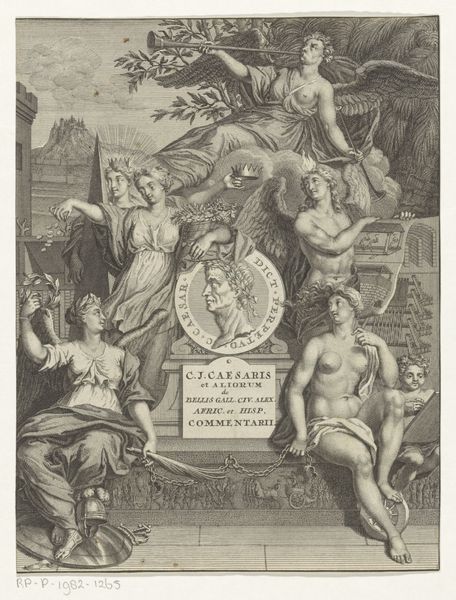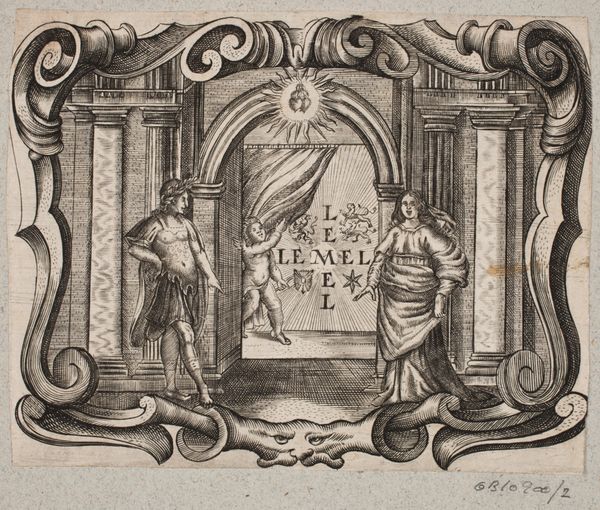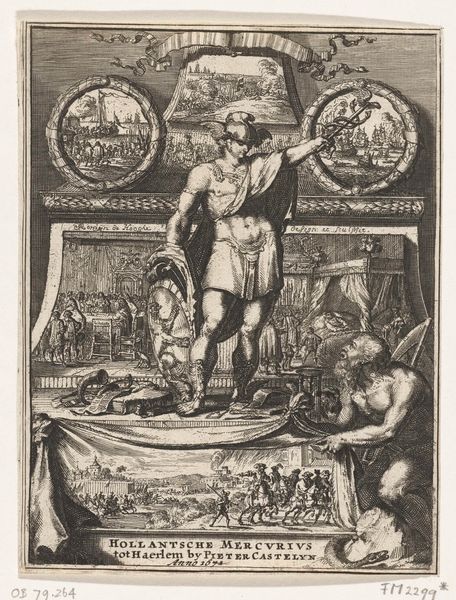
Titelblad til Simon Paulli, "Quadripartitum Botanicum", 1667 1667
0:00
0:00
print, engraving
#
allegory
#
baroque
# print
#
figuration
#
history-painting
#
engraving
Dimensions: 191 mm (height) x 147 mm (width) (plademaal)
Curator: Take a look at this engraving, "Titelblad til Simon Paulli, 'Quadripartitum Botanicum', 1667," created by Albert Haelwegh in 1667. Editor: My first impression is that it's densely packed with symbolism, a potent mix of classical allusion and intellectual ambition. There’s a real sense of the artist wanting to convey layers of meaning here. Curator: Indeed. The title page announces Simon Paulli's "Quadripartitum Botanicum," a major botanical text. Consider how title pages functioned back then: they were advertisements, yes, but also carefully constructed arguments about the intellectual worth and place of the work within a broader learned culture. Editor: Precisely. The figure soaring above, seemingly Mercury, with the inscription “Penna beat coelo; penna volare facit super astra,” tells us a lot. The pen, in this case, signifies intellectual labor—elevating one to the heavens. And that owl perched at the base—the classic symbol of wisdom—underlines the pursuit of knowledge. Curator: Right. We see this drive presented to a public increasingly engaging with science. This wasn't just about cataloging plants. It's about asserting control over knowledge and its dissemination. The classicizing figures—one armed with a bow, and the other a shield—reinforce a kind of heroic, almost martial aspect to scholarship. Editor: The figures feel purposefully balanced, almost gendered too, reflecting how knowledge was constructed during the Baroque era. There's an attempt to depict erudition in the symbolic language that audience understood so the symbols would emphasize the book's and the scholar's intellectual standing. Curator: Certainly, and looking beyond the symbolism, we have to appreciate Haelwegh’s technical skill as an engraver. The level of detail is quite impressive. It brings a certain monumentality to the pursuit of botany itself, linking it to grander themes of history, medicine, and, of course, societal power. Editor: This visual echoes that sentiment, linking specific fields to overarching themes within their eras. I wonder about its cultural impact and influence, whether such an ornate piece added weight and recognition for Simon Paulli's book. Curator: That’s precisely what makes this image so compelling. It offers insight not just into one book, but also the broader cultural landscape of 17th-century scientific inquiry and artistic symbolism. Editor: Agreed. It gives an indication of how people thought of botanical information during the time and reminds us that printed works, like Paulli’s, didn’t live in an intellectual bubble, they spoke through and to the broader cultural norms.
Comments
No comments
Be the first to comment and join the conversation on the ultimate creative platform.
